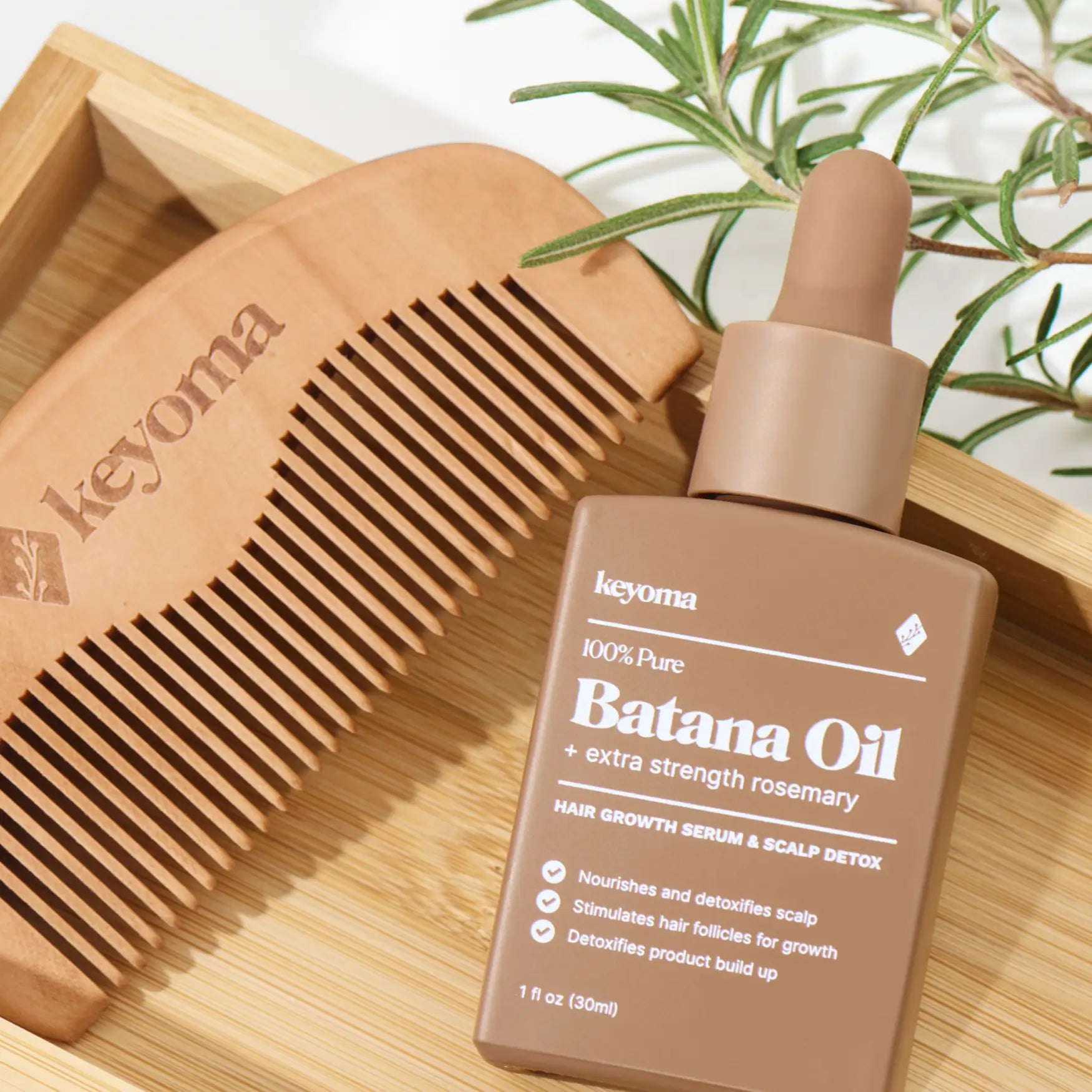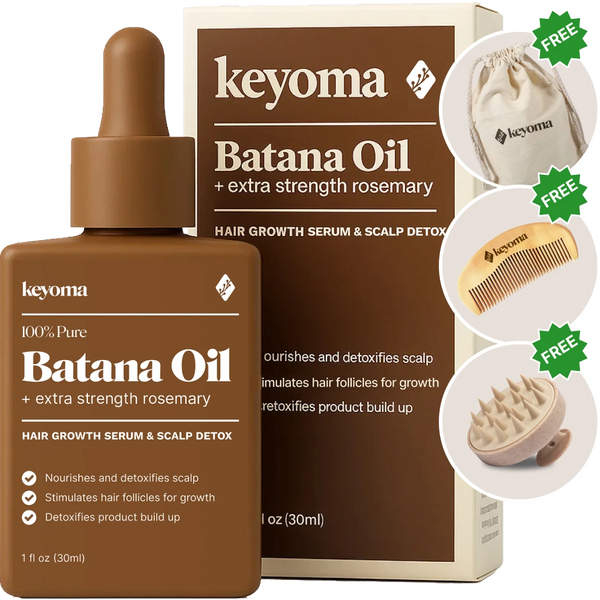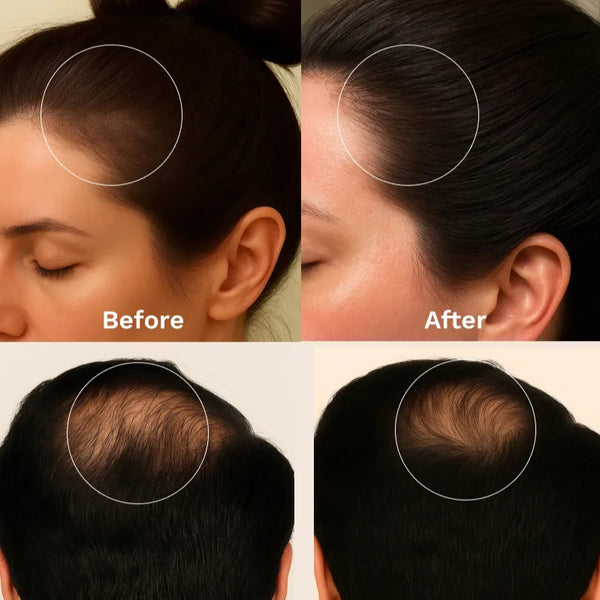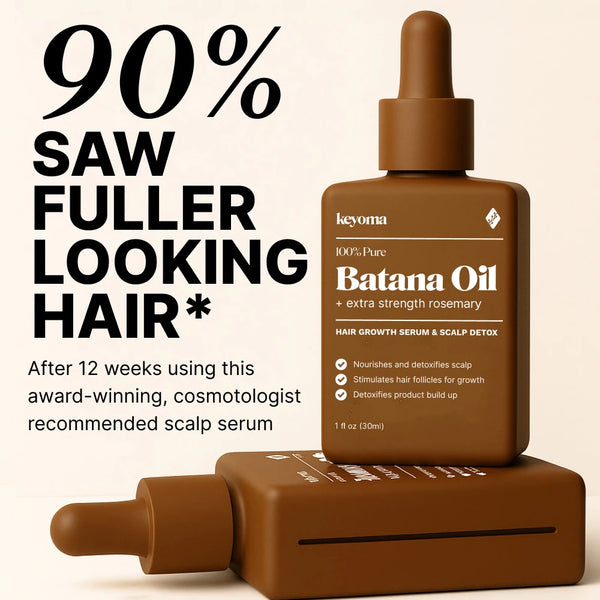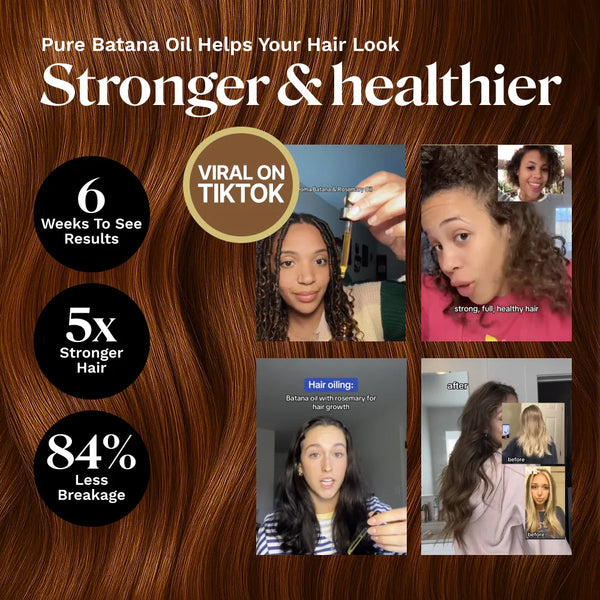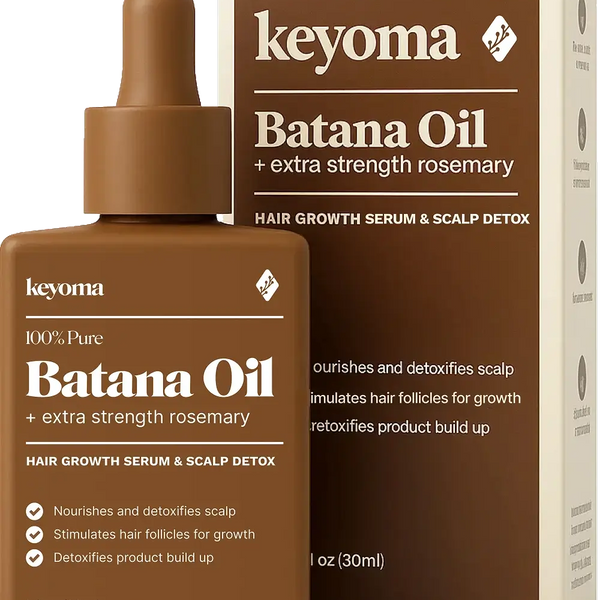In this article
Think about the times your hair suddenly sticks to your face after brushing or changing clothes. That little shock or lift you feel is static doing its thing.
Static hair happens when your hair loses moisture and friction builds up, causing electrons to jump from one strand to another. The drier the air (think cold winters or overheated rooms), the more easily static builds up in your hair.
In this guide, I’ll walk you through the specific causes of what makes hair staticky, and the quick, proven fixes to calm your hair back down.
What Causes Static Hair?
Lack of Moisture
Dry air is the biggest culprit of staticky hair. When there’s little to no humidity in the environment, your hair struggles to hold onto moisture.
And without enough moisture, the outer layer of the hair (the cuticle) lifts slightly, making it easier for strands to build up static electricity from even the smallest movement or contact.
That explains why static tends to hit hardest in the winter, especially when indoor heaters suck the moisture out of the air.
But it’s not just cold climates. High-altitude airplane cabins, desert regions, or even overly air-conditioned rooms can leave the air so parched that your strands start crackling and clinging to your face or clothes.
Friction from Fabrics
Remember the last time you pulled off your beanie or scarf and suddenly your hair started sticking up right after?
The friction from hats, scarves, and even sweaters, especially in colder months, can generate static by rubbing against your strands and charging them up.
What makes it worse are synthetic fabrics like polyester, acrylic, and nylon. These materials don’t absorb moisture well and tend to hold on to electrical charge, which means they’re more likely to leave you with frizz and flyaways.
On the other hand, natural fibers like cotton or wool are more breathable and less likely to zap your hair with static. Even so, natural fabrics can still cause static if the air’s already dry.
Plastic Tools & Brushes
Plastic combs and brushes tend to generate static electricity because they act as insulators. When you brush your hair, friction builds between your strands and the plastic surface and creates an imbalance of electric charges, which ultimately causes those flyaways.
The lighter your hair is, whether in density or texture, the more noticeable this effect becomes.
Thin or fine strands, for example, hold less weight and respond more dramatically to that electric charge, springing up or clinging to nearby surfaces.
Product Buildup
Certain hair products, especially those loaded with silicones, synthetic polymers, or heavy waxes, can leave behind residue that coats your strands.
Over time, this coating blocks moisture from entering the hair shaft and weighs the hair down in uneven patches. The result? Dry, brittle strands with uneven porosity that are far more prone to static electricity.
Overwashing
Washing your hair too often might make it feel clean and weightless, but it also strips away the natural oils that your scalp produces to keep your hair moisturized and protected.
When you remove too much of this natural sebum, you’re left with hair that’s dry, porous, and far more susceptible to static buildup. And since freshly washed hair tends to have less product or oil weighing it down, it becomes the perfect conductor for static electricity.
What's more, if your wash routine is frequent but not paired with the right kind of hydration (like a conditioner rich in humectants such as glycerin), the dryness compounds over time and flyaways become nearly impossible to tame.
Environmental Factors
In some cases, the air around you is the silent instigator. Environmental conditions, particularly those involving temperature, humidity, and elevation, have a strong effect on how your hair behaves.
In low-humidity climates, whether it’s the dead of winter or a desert summer, moisture in the air is scarce. Your hair struggles to retain hydration and thus becomes more prone to static electricity.
Indoor spaces with central heating or blasting A/C have very similar negative effects on your strands.
There’s also the issue of altitude. Higher elevations, like in mountain towns or airplane cabins, come with lower air pressure and humidity. That combination makes hair go dry fast, and static build-up becomes almost unavoidable.
How to Quickly Fix Staticky Hair
When static strikes out of nowhere, you don’t always have time for a full routine. Below are quick, low-effort fixes you can try on the spot to calm the cling and smooth things out.
Try a Dryer Sheet
Remember those thin, slightly waxy sheets you toss into the dryer to keep your clothes from sticking together? Those same dryer sheets are coated with light conditioning agents and anti-static compounds (usually quaternary ammonium salts) that help neutralize static.
To be more specific, a dryer sheet works by transferring trace amounts of its anti-static coating onto your hair shaft. This creates a more even surface and reduces the repelling forces that cause flyaways.
To use it, lightly rub a clean dryer sheet over the top layer of your hair or focus on the ends and outer strands that tend to stand up.
You can also swipe it across your brush or even your pillowcase for an extra layer of static control.
Apply Hairspray to Your Brush Before Using It
Hairspray contains polymers and fixatives that create a light film over your strands, helping to smooth the cuticle and pin down flyaways.
When sprayed directly onto your brush instead of your hair, you get a more even and controlled application. It also keeps your hair from feeling stiff or overly coated.
Aim for a light mist on the bristles before brushing through dry hair. Don’t soak the brush, just a quick spritz is enough.
That said, it’s not ideal to do this daily, especially if you’re already using a lot of styling products, since buildup can weigh hair down or dull its shine over time.
Use Hair Nourishing Oils
Hair oils are typically made up of lipids that mimic the natural sebum your scalp produces. These lipids work by filling in the tiny cracks along the cuticle layer of each strand, smoothing the surface and sealing in moisture.
Lightweight oils like batana, argan, squalane, or even jojoba are best at forming a breathable layer that not only protects against moisture loss in dry environments but also reduces surface friction that's often to blame for staticky hair.
Start with just a drop or two. Warm it between your palms and lightly press it into your mid-lengths and ends, or smooth it over flyaways.
Better yet, apply the hair oil after styling or as a finishing step before heading into windy or dry conditions. You can also mix a few drops into your leave-in conditioner or apply some on your brush to help control static throughout the day.
Avoid the roots unless you’re intentionally oiling your scalp, as too much can weigh down your hair or make it appear greasy.
Wear a Braided Updo
Braided updos are a low-friction, low-static styling choice. By keeping your strands woven together and neatly tucked in—not loose where individual hairs rub against each other or your clothes—you minimize the surface area exposed to dry air, fabric, and friction-based movement throughout the day.
It also prevents loose strands from lifting or catching excess electric charge if you’re wearing a high-collar coat or scarf.
That said, don’t pull too tight. A loose, soft braid helps maintain a protective shape without adding unnecessary tension on your roots or hairline.
And if your hair is especially dry or porous, apply a light mist of leave-in conditioner or a few drops of oil before braiding to add extra slip and keep friction (and static) to a minimum.
How to Prevent Static Hair
Preventing static starts with long-term moisture retention and reducing friction in your daily routine. Below are simple habits and material swaps that help keep static from coming back.
Use a Hydrating Shampoo and Conditioner
Hydrating shampoos and conditioners are typically formulated with humectants like glycerin or hyaluronic acid, which attract water molecules and bind them to the hair shaft, and ultimately make hair less likely to pick up static from friction or dry air.
Look for shampoos labeled as "moisture-replenishing" or "hydrating," especially if they’re sulfate-free. Ideally, pair them with a matching conditioner rich in emollients like squalane, aloe, or fatty alcohols.
Avoid Overwashing Your Hair
On average, washing your hair 2 to 3 times a week is enough. Any more than that, and you likely risk stripping away the natural oils that keep your strands smooth, sealed, and static-resistant.
If you’re prone to oily roots but still experience static, consider using a gentle, low-sulfate shampoo every few days, paired with a humectant-rich conditioner.
You can also refresh between washes with a lightweight leave-in mist or simply rinse with water and recondition.
Use a Humidifier Indoors
A humidifier works by releasing water vapor into the air, helping maintain optimal indoor humidity levels (ideally between 40% to 60%). This moisture in the air helps your hair retain its internal hydration and prevents the cuticle from lifting, which reduces both frizz and static.
Place a humidifier in rooms where you spend most of your time, like your bedroom or workspace. Run it regularly during colder months or whenever you’re using indoor heating. Just don’t forget to clean it often, since humidifiers can harbor bacteria or mold if left unattended.
Sleep on Silk Pillowcases
Silk is made from natural protein fibers, which means it’s smoother, softer, and far less absorbent than cotton. It lets your strands glide freely without friction or dryness. So yes, it might be time to ditch your old cotton pillowcase.
If you tend to move a lot in your sleep, a silk scrunchie can also help keep your hair secure without causing tension or additional friction.
Switch to a Microfiber Towel to Dry Hair
Microfiber towels are made of ultrafine synthetic fibers that are tightly woven, giving them a much smoother surface compared to standard cotton towels. This structure drastically reduces the amount of friction during drying, which means less damage to the hair cuticle and fewer chances for static to develop.
Instead, use a microfiber towel to gently blot or squeeze out excess water. Avoid wringing or rubbing. You’ll not only protect your hair from static, but also from frizz and breakage over time.
As a bonus, microfiber is more absorbent too, which means less heat-styling needed afterward.
Swap Out Plastic Combs
Switch to tools made of anti-static materials like metal, carbon fiber, or wood. These materials are better conductors or more neutral in charge, which means they either disperse static or don’t generate much of it in the first place.
For added benefits, use a boar bristle brush, which not only prevents static but also helps distribute your scalp’s natural oils from root to tip.
Just make sure to keep your tools clean. Product buildup on any brush or comb, even the anti-static kind, can dry out your strands and cancel out their benefits.
Switch to an Ionic Blow Dryer
Ionic blow dryers emit negatively charged ions, which break down the water molecules on your hair into smaller particles. These smaller water droplets absorb faster into the hair shaft, speeding up drying time while preserving internal moisture.
The negative ions also help neutralize the positive charge that causes static, resulting in smoother, more grounded strands.
When using one, keep it on a low or medium heat setting and aim the nozzle downward to follow the direction of the cuticle.
And if your dryer has a cool-shot button, use it at the end to help lock everything in place and further prevent static from creeping in later.
Can Static Damage Hair?
Static itself doesn’t tear or split the strand outright. But the side effects of static buildup, like repeated friction, dryness, and raised cuticles, can gradually erode your hair’s outer layer over time.
As a result, your strands are more likely to tangle, snag on clothing, or rub harshly against each other, which further weakens the cuticle over time and even lead to accelerated wear in already damaged or color-treated hair.
Frequently Asked Questions (FAQs)
Is static hair unhealthy?
Not necessarily. Static hair isn’t a sign of poor health, but it does mean your hair lacks enough moisture or has a disrupted cuticle layer, both of which can make it more fragile over time if ignored.
How do I stop my hair from being static?
The key is hydration and friction control. Use moisturizing products with humectants, avoid overwashing, switch to anti-static tools, and minimize exposure to dry environments (like heated rooms or windy days) by using protective styles or a humidifier.
Can coloring make static hair worse?
Yes. Coloring, especially bleaching, opens up the cuticle and makes your strands more porous. That added porosity leads to faster moisture loss, leaving your hair drier and more prone to picking up static charge.
Why does hair become more static in winter?
Cold winter air has low humidity, and indoor heating dries it out even more. Dry air means less moisture in your hair and more friction from hats and scarves, creating the perfect conditions for static buildup.
Does static cause hair loss?
Not directly. Static won’t make your hair fall from the roots, but it can lead to increased breakage and cuticle damage if it’s causing friction, tangling, or snapping during brushing or styling.
Calm the Static for Good With Keyoma
Keyoma’s Batana + Rosemary Hair Oil Blend restores moisture to dry strands and helps neutralize static before it even starts, making it one of the easiest ways to protect your hair from dry air, friction, and flyaways.
What makes it extra special is the benefits brought about by its unique formulation. The rosemary extract brings antifungal and scalp-balancing properties, while pure batana oil delivers deep nourishment that leaves your hair soft, shiny, and full of bounce.
Try it today to keep your hair hydrated and beautifully flyaway-free!
Featured Product
100% Pure Batana Oil + Rosemary
↓Best Batana Oil to Buy↓
1 Month
Subscribe & Save
- 30-day supply delivered monthly $35
- 30% off for life $6
- Free haircare essentials kit $33
- Free custom wooden comb $10
- Free scalp massager $15
- Free eco-friendly travel bag $8
- 30-Day Money Back Guarantee
- Free Shipping
- Online portal for easy cancel, skip, or pause.
1 Month One Time Purchase
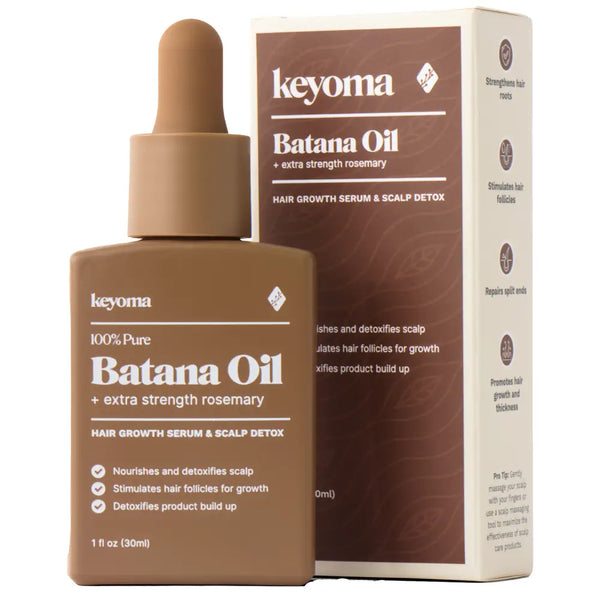
- 30-day supply $50
- 30% off for life $6
- Free haircare essentials kit $33
- Free custom wooden comb $10
- Free scalp massager $15
- Free eco-friendly travel bag $8


